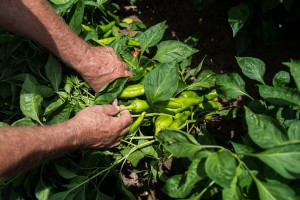I’ve come to the conclusion that the whole “water flows uphill toward money” thing is not only wrong, but that its wrongness is problematic.
It’s one of those intellectual shortcuts that can be dashed off uncritically, and audiences nod knowingly because of course water flows uphill toward money we all know that, and no further analysis is needed. Sometimes this is right. But across a huge range of water allocation decision making, it is utterly wrong. While “water sometimes flows uphill toward money, while at other times it doesn’t, and we should think carefully about why it is or isn’t the case here” might be more analytically useful, it lacks the rhetorical punch.
Why is this?
Rules. We have water allocation rules that frequently create barriers that make it difficult, if not impossible, to move water, even if the move might be hydrologically possible. I’m not arguing here that this is good or bad. I’m merely trying to point out that “water flows uphill to money” is a myth, and that it gets in the way of sane water policy conversations.
I’ve been tracing back the history of the phrase for my book, and looking at its myth and reality in the Colorado River Basin, but I’ll save that for another time. Let me instead explain by way of a crisp example on the Rio Grande here in New Mexico.
Consider this Albuquerque Journal story last week from Ollie Reed. First is a comment from David Gensler, who manages the water supply for the Middle Rio Grande Conservancy District, which delivers farm water to Rio Grande Valley farmers in the central part of the state: “Right now the outlook for farmers is pretty good.” That’s been pretty consistent. While there have been some shortfalls in recent years, Gensler and his farmers have limped by with most of the water they needed most years. Meanwhile downstream, Phil King’s outlook for farmers on New Mexico’s southern Rio Grande (the same river) remains dismal:
“The last five years have been so pathetic that we now have really low standards and this year looks good,” King said. “You can’t have the worst year ever every year. But we are still a long way from average.”
Annual agricultural production down south, where King’s farmers are wrestling with shortage, is roughly $7,000 per acre, with big dollar crops like pecans, onions, and chiles. Up here in the middle valley, where Gensler’s farmers are fat and happy, it’s about $3,500 per acre.* That’s pretty much the opposite of water flowing uphill toward money. When I was doing drought reporting for the newspaper, I would hear this all the time from southern New Mexico farmers, glaring at the farmers up north and muttering about how they seem to have all the water they need and what are they growing with it, just alfalfa?
The rules in this case involve the Rio Grande Compact, which sets a boundary between these two parts of the river across which it is physically possible but legally quite difficult to move water. It is legally impossible for a farmer up here and a farmer down there, a willing seller and a willing buyer, to do a deal so the water could flow uphill toward all that pecan and chile money.
I intentionally picked an ag-to-ag comparison here to avoid letting this slip into a “farms versus cities” argument. The ag-urban contrast is more common. Our cities are a big, rich, muscle-bound part of our economy, the farms are just a small percentage, yet the farms have most of the water. There are plenty of exceptions, plenty of interesting and important cases where the alternative is true, that water moved toward the money (think Owens Valley or the vastly expensive Central Arizona Project where the water’s quite literally flowing uphill at great expense). But there are also tons of cases where it hasn’t happened, and thinking through the differences is important.
* Author’s calculations based on income data from the U.S. Department of Commerce and acreage data from the two irrigation districts


Hi John, I’m confused on the $/acre. Is this the value of the ground, or what an acre foot of water is worth in the locations?
Sorry. It’s total dollar value of crop production per acre.
Wish I could give you all some of the floodwater on my farm in Indiana.
Hey John, I have a question: what is the $production/acre foot for each region? This would be especially interesting in the alfalfa vs pecan case, since they are both flood irrigated crops.
Maybe we should replace it with, “Water flows toward Tom Selleck”.
MIchael – That’s a good question for which I don’t have a good answer. To first order, the ratio would be similar to the dollars per land acre total farm revenue, but the calculation of dollars per unit water is non-trivial.
Water flows where politicians “tell” it, and money drives that process.
David –
I don’t think that modification saves the thing.
There are too many cases where the places with the money and therefore the politicians don’t get the water (Imperial has far less politicians and political money, but it still has most of CA’s Lower Colorado River allocation, one of many similar examples). Neither formulation (uphill to money, uphill to politicians with money) is sufficient to explain a system in which people are screaming about scarcity and water crises and so on while agriculture, which makes up 2 percent of the economy, is getting 80 percent of the water.
In another context today, you mentioned the importance of the institutionalists. I think they’ve got the missing pieces of this puzzle – historical contingency, path dependence, and the blocking power of the “anti-commons” often trump politicians and the money spent on them. Dustin Garrick’s new book is great at teasing out how all these bits interrelate.